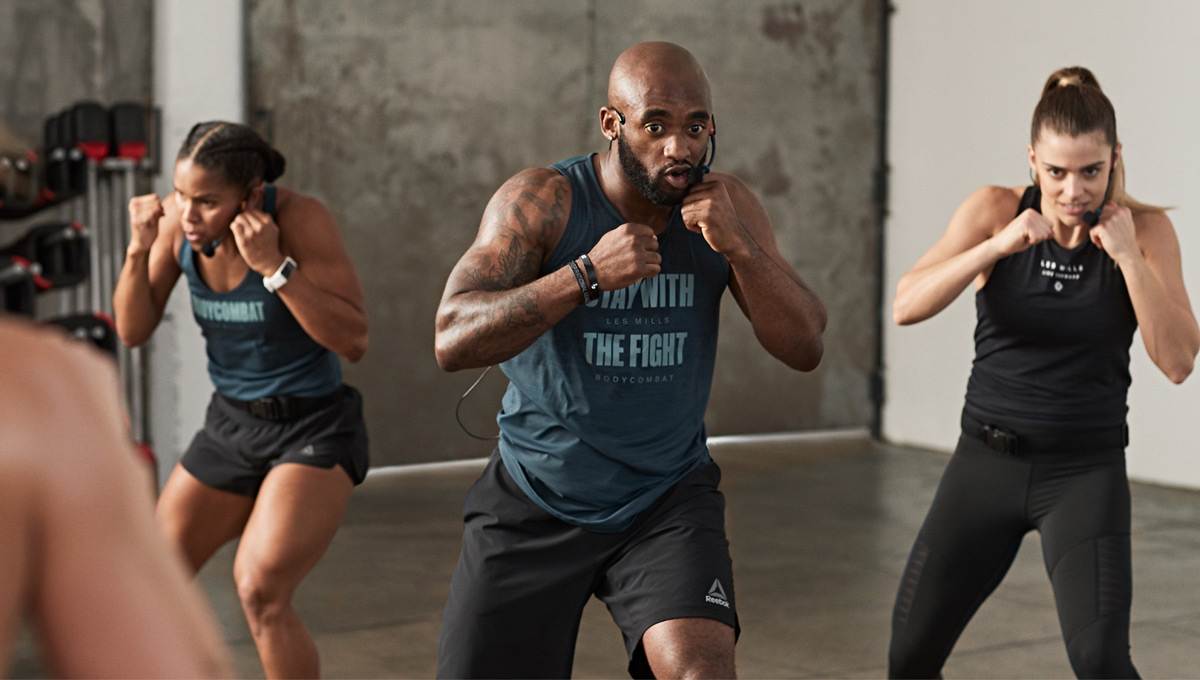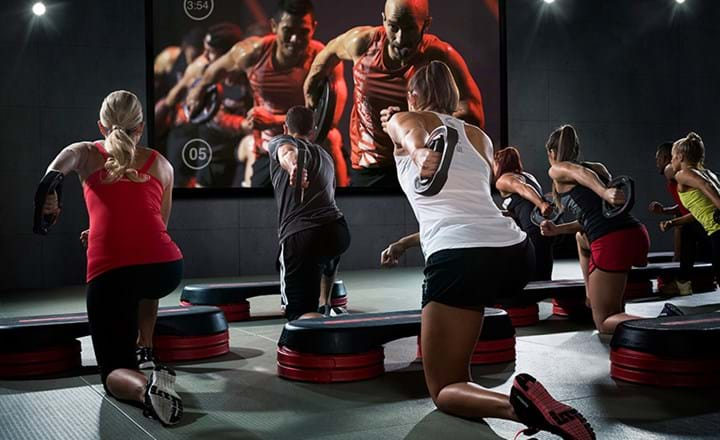
Like many industries, fitness has traditionally struggled to connect the live in-club workout experience with digital offerings that can be done anywhere. Live and digital have stayed distinctly apart, like tectonic plates that awkwardly butt against each other, creating friction and building pressure.
Then came the earthquake. COVID changed everything, and the shockwaves are still being felt by operators today. In the space of a year, digital adoption skyrocketed and the resultant shift in consumer expectations means live and digital fitness can no longer be kept separate.
For operators to stay relevant and conquer the newly-formed fitness landscape they need to bridge the gap between live and digital to provide a truly omnichannel fitness.
Although the Live Revival is gathering pace and people are relishing being back in their facilities, 80 percent of gym members plan to continue using digital workouts as well, with the majority of consumers (59%) favoring a 60:40 split between gym and home workouts.
The digital fitness boom and the growth of home working mean today’s fitness consumers demand a connected fitness experience that offers convenience and enables them to maintain a more active lifestyle. As a result, livestream and on-demand are now a basic expectation and essential tools to keep members engaged with your club in a world where over 375,000 fitness apps are vying for their attention.
For Kevin McHugh, COO of The Atlantic Club in New Jersey, US, staying open to new ways of thinking and treating technology as a friend rather than an enemy is key to a successful transformation.
“Ourselves and other leading clubs must continue to do a better job maximizing the live in-club experience – which is our USP – as well as providing an outstanding range of digital options for when members can’t make it to the club and educating on how to get the most out of them,” he says.

“One of the most important strategies that health, fitness, and wellness clubs need to employ is to expand their reach beyond the traditional bricks and mortar to provide members with a total wellness solution. The leading health and fitness clubs of the future will provide a full omnichannel solution to members.”
So how can you bridge the gap to ensure your club’s physical and digital offerings serve as complementary aspects of your overall member experience? Based on the latest research and insights from world-leading clubs, here are 6 key plays to seamlessly link your live and digital offerings.
1. Elevate your brand
The first question to consider – and it’s a big one: Does your digital user experience match the standards you set when people visit your club?
It’s one of the main areas where clubs in the early stages of their digital transformation fall short. And one of the most important.
Giving a great account of your brand is vital because there’s so much play for. Digital offers huge opportunities for clubs to reach beyond their traditional local catchment. Now, anyone with a smartphone is a potential prospect for your club’s digital memberships.
Standalone digital offerings can be a great way for clubs to win new fans online, but you won’t achieve any of this unless you bring these users an outstanding member experience that reflects your brand values.
The crucial part is serving up high-quality on-demand fitness content and livestream classes that are motivating, fun and results-driven. After all, Youtube is chock-full of free, average fitness content, so your offering needs to be world-class to keep the audience coming back and paying.
Consider also the channel you’re delivering content through – is it slick and friction-free? Do the marketing assets give an accurate and aspirational reflection of your brand? These are all key factors in forming a good first impression with your online audience.
2. Leverage digital to drive live growth
The pandemic has created a new generation of fitness fans, with 27% of the total market (those who regularly exercise or plan to start soon) considering themselves to be total beginners. These are people who have taken their tentative first steps into the world of fitness and are now deciding what comes next.
The ability to reach beyond your existing membership and attract these fresh faces into facilities will be key to operators’ long-term growth. High-class digital offerings can help clubs win new fans online, build brand affinity, and then eventually convert them to becoming full members of the club.
Opportunity abounds for operators who can appeal to these groups and understand the unique barriers to exercise they face. Many of these new exercisers will be a different breed to members of the past, with a greater focus on health over aesthetics, and very different expectations of their gym.
Although 81 percent of beginners are interested in group activities, 66 percent say they currently prefer to exercise alone, suggesting a confidence chasm that needs to be bridged before beginners feel fully comfortable exercising in the club environment.
Instructors and wider staff have a key role to play in making them feel welcome, while helping beginners to find intrinsic motivation to exercise will be key to their long-term adherence.
The question is, how will your organization’s transformation set you up to capitalize on these new opportunities and meet the expectations of the modern fitness consumer?

3. Join the dots
Another common stumbling block comes when clubs create digital solutions that are completely disparate from their live in-club offerings. It’s no good enticing members and prospects online with a bunch of off-the-shelf on-demand and livestream classes that they can’t do in your club.
Using digital to complement your in-club offering through a connected member experience is key. Are you offering digital versions of the workouts that members love doing in your club? And conversely, are you offering better live versions of the workouts featured on your digital channels, so that users are enticed to come to the club more for the full experience?
By taking that authentic club experience into homes, operators can reach huge swathes of the population who wouldn’t typically visit a club and help them start their fitness journey. And by supporting these people to build their fitness skills and confidence at home, operators can graduate their new fans into a club space that they’ll already be familiar with.
One operator that’s harnessed the mix of livestream and on-demand to undergo a full digital transformation is Greater Philadelphia YMCA in the US, which is doubling down on its digital platform to reach wider into the community
“We’re committed to creating a high-quality digital offering for our members because we can’t afford not to,” says Henry Vazquez, Greater Philadelphia YMCA’s Creative Services Director and a former TV Executive.
“What we’re seeing now in the club industry is reminiscent of what’s happened in the television industry over the past decade as powerful digital players have come to the fore."
4. Market on a macro level
Integrating the member experience is equally applicable when it comes to your marketing. Rather than treating digital and live as separate components of your offering, it’s important to seek out synergies and pursue an omnichannel approach. Fusing the best of digital (innovation, accessibility, and scalability) with the motivation of live fitness experiences will be the key to long-term success – and much of this will be driven by your marketing.
“A solid marketing strategy requires a slick customer journey that takes an omnichannel approach – using the club as a promotional channel for your digital offerings and vice versa,” advises Les Mills Chief Marketing Officer Anna Henwood.
“How can you demonstrate the value of your total membership package (with digital included) and price it attractively to encourage the upsell? Does the digital user experience match the standards you set when people visit your club? Is your app/website consistently branded and easy to navigate? Is it bug-proof? These are the basic elements that need to be executed well for the offering to be considered a total package that the member sees value in and is willing to pay more for.”
It’s also essential to advertise your digital offerings with the same gusto as your in-club classes, harnessing your social media channels, mailing lists, and member app to keep everyone updated with your latest livestream timetable and on-demand content.

5. Don’t leave member uptake to chance
Much like the marketing of your digital timetable, there are many classic club management principles that still apply to your online fitness solutions – particularly when it comes to onboarding members.
If you’re launching digital fitness solutions, the way that you onboard members to best showcase these offerings is critical to their long-term success.
Much like when they first join your club, ensuring members start their digital journey with a bang will be key to engagement and retention. This means clear communication around what’s on offer and helpful guidance on ways members can make the most of it. How about a challenge that encourages members to try as many different options as possible over the first couple of weeks to help them find their favorite workout options?
6. Don’t forget your most valuable asset
The emergence of high-powered digital fitness offerings from the likes of Apple and Google certainly isn’t going to make life any easier for operators, but with every new challenge to the club model, comes fresh opportunity. Clubs may not have the financial might or brand power of major tech firms, but they have assets that Big Tech can’t yet match: highly-engaged communities centered around authentic, human connection and live experiences. Instructors are central to this.
In the same way that our rockstar Instructors and personal trainers deliver the most motivational experiences in-club, it’s been the livestream classes and virtual coaching sessions that have proved most powerful online and lit up our social media feeds during the pandemic.
For all of the tech solutions now available to clubs, great people are the only unique selling point that your rivals can’t copy. We’re all working to make the world fall in love with fitness, but it’s the people delivering it that make members fall in love with your club.
With the Live Revival gathering steam, members are yearning for deeper connection and human interactions, so how we leverage and nurture our teams to bridge the gap between our in-club and digital offerings will have a major bearing on our future success.
THE GAME HAS CHANGED AND SO HAVE THE RULES
Learn the new rules of fitness and how your club can win with the 2021 Global Fitness Report.
DOWNLOAD THE FINDINGS